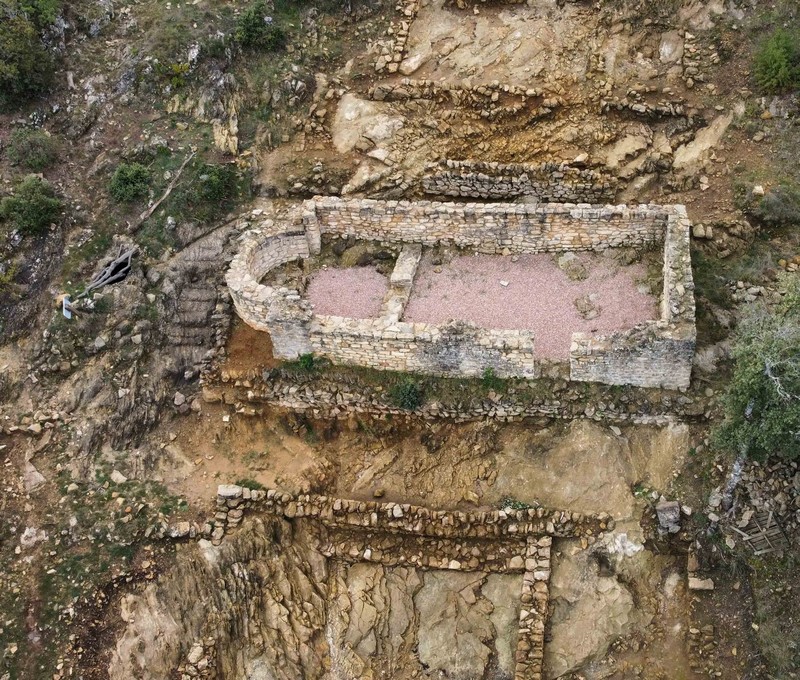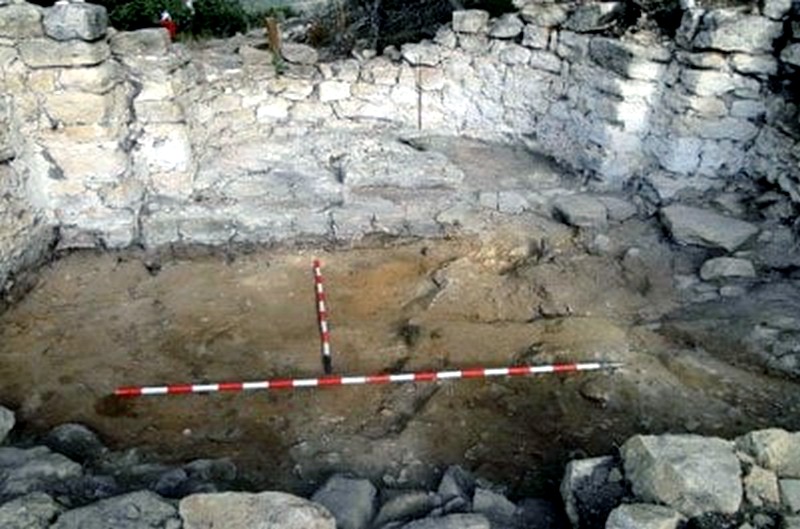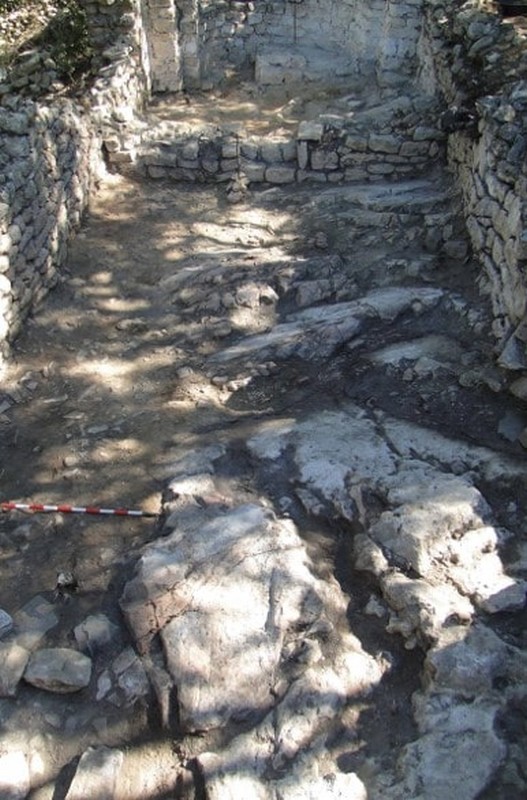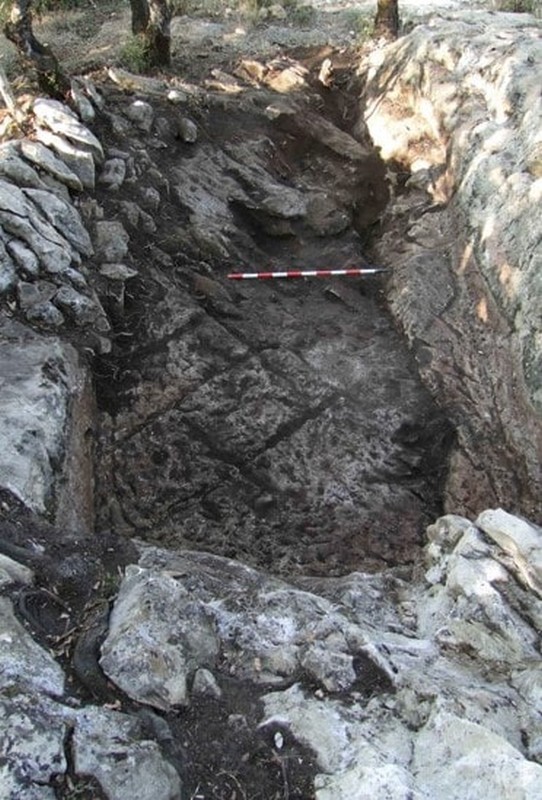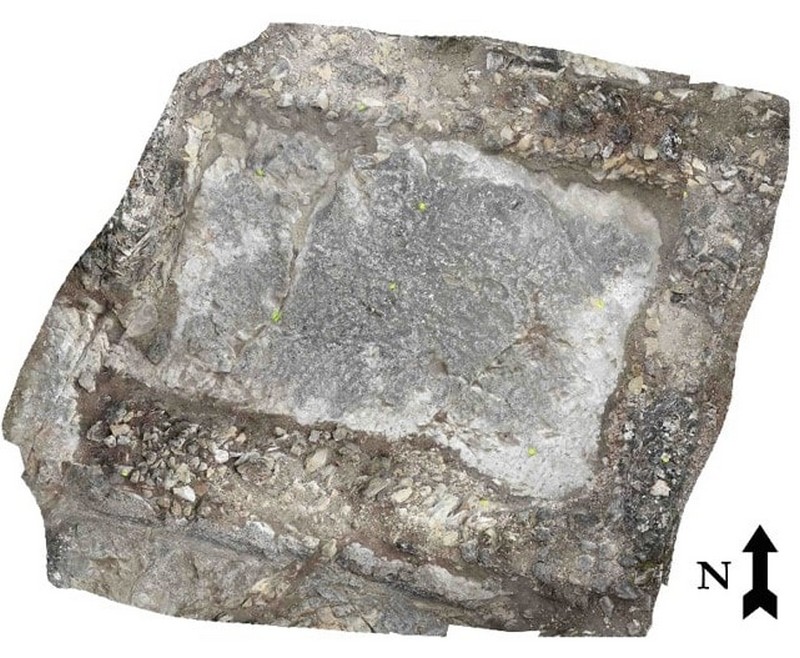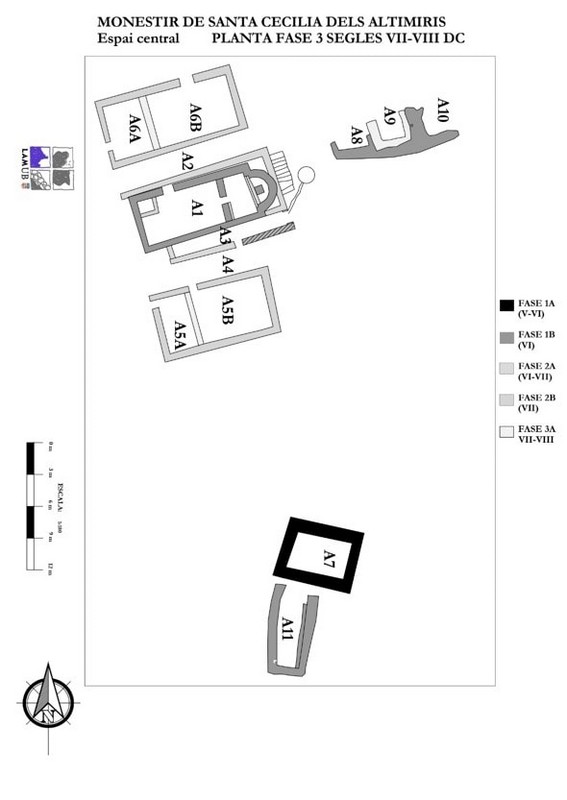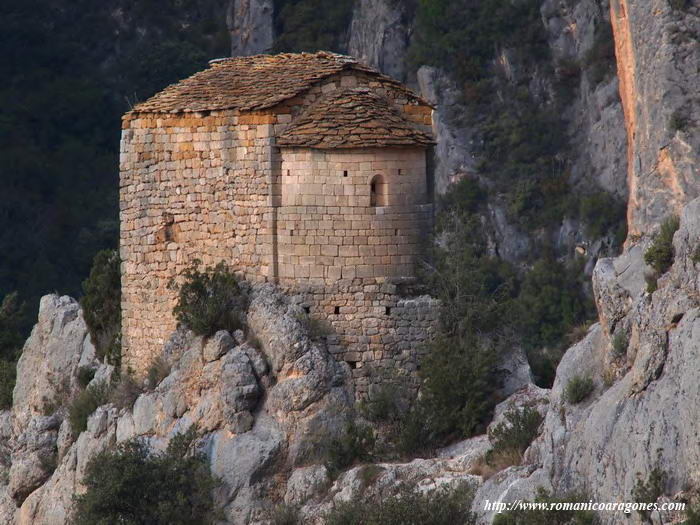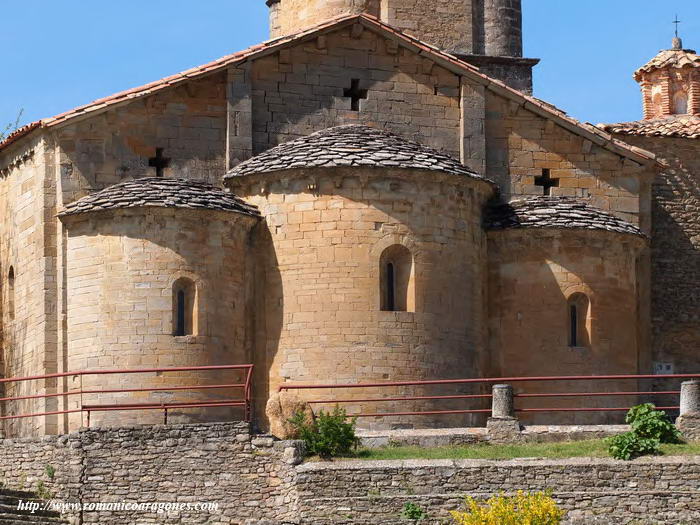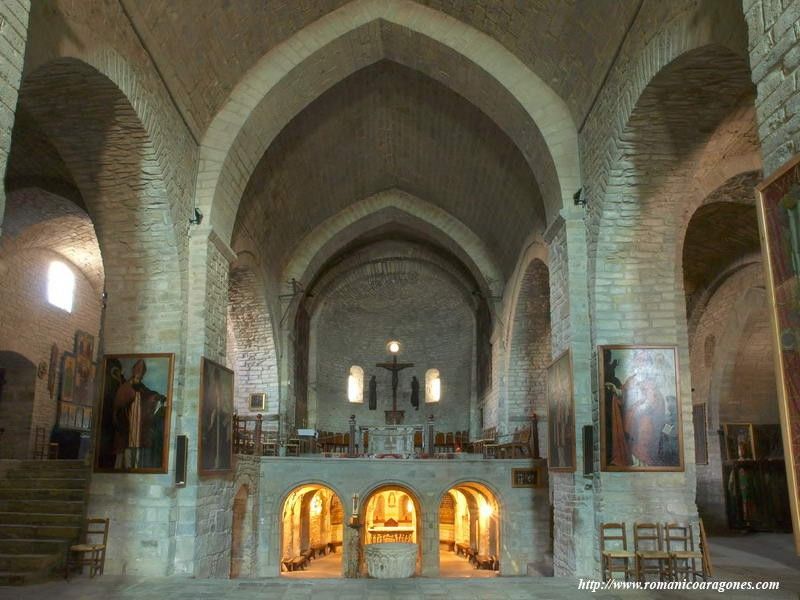SANTA CECILIA DE ELS ALTAMIRIS

Historic environment
Santa Cecilia de Els Altimiris is an archaeological complex under excavation since 2004 that, in light of the data that has been recovered, is interpreted as a monastic establishment from the 5th-8th and 9th-11th centuries. It is located in the pre-Pyrenean mountain range of Montsec d’Ares (Lleida), on the triangular summit of a foothills 900 m high and in an environment dominated by forests and pastures. All of this is part of the Congost de Mont-rebei Partial Nature Reserve.
Its existence must be put in relation to the eremitic movements typical of this mountain region and with the 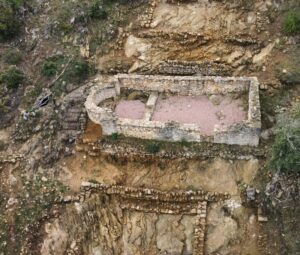 new forms of Christian spirituality that developed from the dismantling of the Western Roman Empire, who looked for places far from the cities to settle their communities.
new forms of Christian spirituality that developed from the dismantling of the Western Roman Empire, who looked for places far from the cities to settle their communities.
The complex is made up of a church with a single nave and a semicircular apse surrounded by a series of rooms close to the sacred building. Nearby but without direct physical contact, there is a large rectangular structure, possibly of a community nature, two cisterns excavated in the rock for collecting rainwater, and a series of cabin bottoms that, due to their small dimensions, would have individual use. Access to all these structures is protected by the construction of a large wall that closes the south face of the top of the northern foothills and by cliffs on the east and west faces that converge at what is known as ‘Paso de Santa Cecilia’, dug into the rock mass.
500 meters in a straight line from Els Altimiris is Cova Colomera, a natural cave frequented since Prehistory and with an important phase of occupation belonging to the same chronology as Els Altimiris. The relationship between both sites is in an incipient phase of study, and in no case could a eremitic function related to the monastery be ruled out (following the model known for Asán), although it cannot be demonstrated either.
Its strategic location at an intermediate point between the old bishoprics of Osca, Vrgellum and Ilerda, led the settlement to develop a marked function of controlling the passage of the transhumant herds that moved from the summer pastures of the Pyrenees (with the end of the route in the territory of Vrgellum) to the winter pastures of the plains surrounding the territory of Ilerda, and vice versa. Control functions of transhumant livestock are well documented in later monasteries such as Santes Creus. It is a key place in the archeology of late ancient Hispania, as it is one of the few peninsular archaeological sites identified as a monastery dating back to before the Muslim occupation that is being excavated with modern archaeological criteria and methodology.
Description
The first documented building (450-525 AD) corresponds to area A7 measuring 6.5 x 5.5 m, built with walls of opus incertum and pavement of opussigninum. The church, measuring 14 x 6m, was built soon after, with walls of 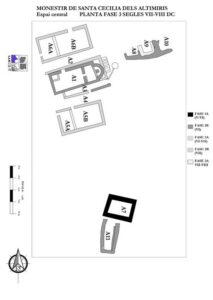 masonry that gives shape to a single nave plan with a semicircular apse. This church was repaired during the second half of the 19th century. VI with a wall also made of masonry and lime mortar on its north and east perimeter. The reason for this repair is to reinforce the entire structure and prevent it from collapsing on the north side. In this same phase, a wall was built on the south side, using the same masonry and lime mortar technique, that formed a corridor (area A3) and communicated with an area of still unknown dimensions (A4). At the end of the 6th century and the beginning of the 7th century, the monastic complex was extended with masonry and earthen mortar buildings that were arranged symmetrically towards the south of the church (A5), beyond area A4, and towards the north (A6). , beyond scope A2. These new structures clearly reflect a lower capacity to manage resources, as can be deduced from the substitution of lime mortar for mortar.
masonry that gives shape to a single nave plan with a semicircular apse. This church was repaired during the second half of the 19th century. VI with a wall also made of masonry and lime mortar on its north and east perimeter. The reason for this repair is to reinforce the entire structure and prevent it from collapsing on the north side. In this same phase, a wall was built on the south side, using the same masonry and lime mortar technique, that formed a corridor (area A3) and communicated with an area of still unknown dimensions (A4). At the end of the 6th century and the beginning of the 7th century, the monastic complex was extended with masonry and earthen mortar buildings that were arranged symmetrically towards the south of the church (A5), beyond area A4, and towards the north (A6). , beyond scope A2. These new structures clearly reflect a lower capacity to manage resources, as can be deduced from the substitution of lime mortar for mortar.
The roofs of the structures were made of different materials depending on the structure and phase. The roof of area A7 was built on one slope with tegulae and imbrex, at least in its first phase. The church or A1 was built gabled, with tegulae and imbrex possibly in its first phase, and with sandstone slabs during later phases. The rest of the areas were covered with roofs of organic matter, probably on one slope.
While in most spaces the floors were made of pressed earth, inside the church the flooring was made of slabs in the nave and choir, and lime mortar in the apse where the square-based altar was included. The opus signinum pavement of area A7 was preserved throughout the occupation of the site.
Around these buildings, located in the center of the settlement, there were rectangular-shaped structures excavated in the rock, which had various uses: habitat, craft production, and storage. These had vegetal roofs and in some cases some of the walls were made of wattle or wattle and mud. We also found stairways cut into the rock, pipes and three cisterns cut into the rock, one of which had an internal volume of 34 m3. .
Walter Allegría, Jordina Sales-Carbonell and Marta Sancho for URBS REGIA</p >
Other interesting information
Difficult access, free visit
Bibliography
Sancho i Planas, M.; Alegría, W., 2017: “Propuesta de contextualización del yacimiento tardoantíguo y altomedieval de Els Altimiris (prepirineo leridano) siglos V-IX”, Archeologia medievale, nº 44, 155–170.
-Sancho Planas, M.; Sales Carbonell, J.; Alegría Tejedor, W., 2019: “Santa Cecilia de Els Altimiris: un monestir de muntanya entre l’Antiguitat Tardana i la primerenca Edat Mitjana”, 4th International Congress of Archaeology and the Ancient World Tarraco Biennial / VII Reunió d’Arqueologia Cristiana Hispànica: El Cristianisme en l’Antiguitat Tardana, noves perspectives, Universitat Rovira i Virgili – Institut d’Estudis Catalans, Tarragona, 225-234.
-Sales-Carbonell, J.; Sancho i Planas, M., 2019: “Monastic networks and livestock activity: relathionships and contacts at a regional level (VI-IX centuries)”, en Les moines autour de la Méditerranée. Contacts, échanges, influences entre Orient et Occident, de l’Antiquité tardive au Moyen Âge : Mobilités et contacts à l’échelle local et régionale, École Française de Rome, Roma, 197–222
Portals






